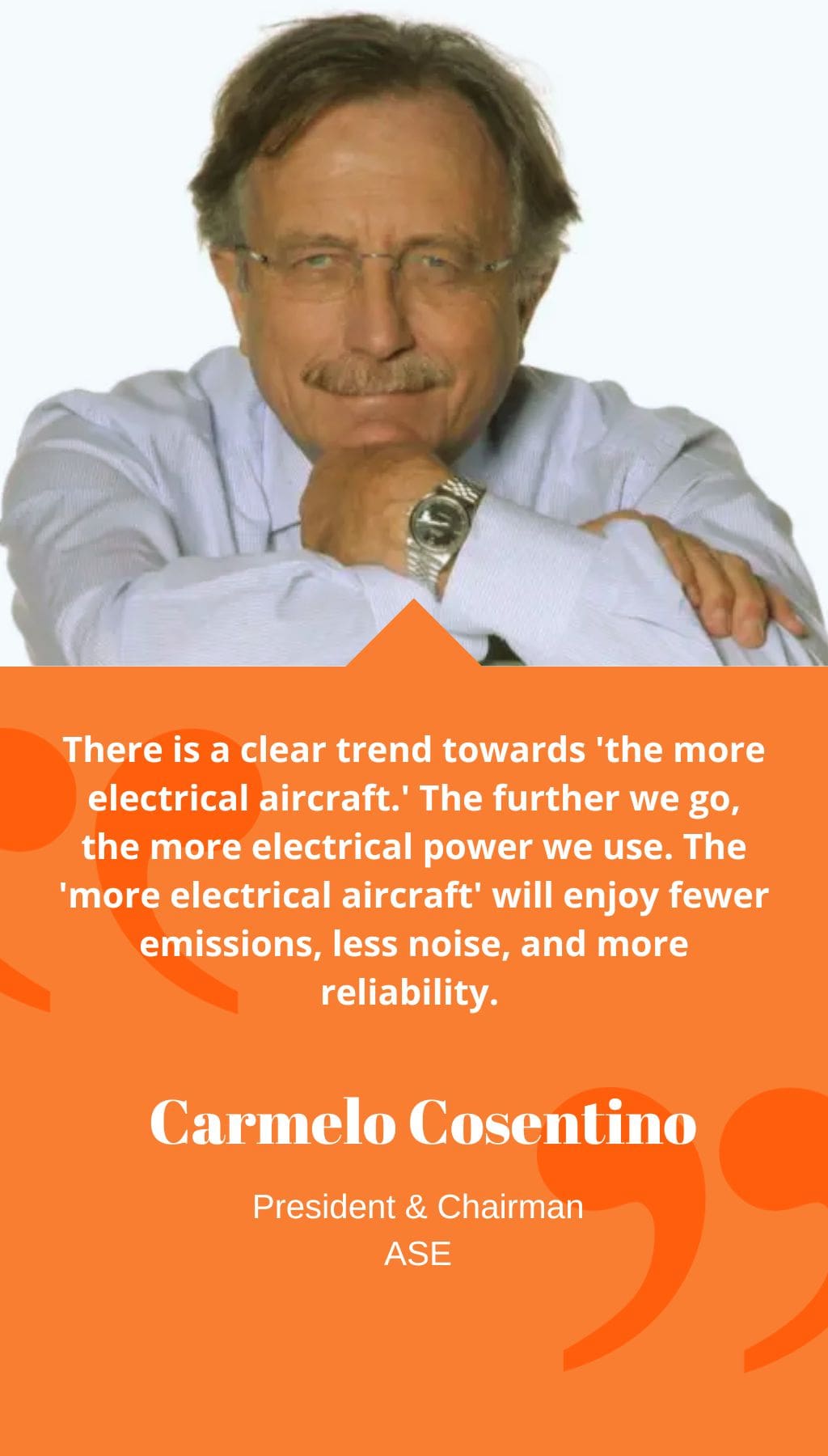
- Italy | 6 April 2018

Could you please provide a brief overview of ASE?
ASE, which originated from Magneti Marelli Group and was established in 1937, initially dealt with electrical power generation, conversion, and distribution systems for aerospace and military platforms. Today, we have about 130 employees, but we also use subcontractors for our engineering activities. Our competitors are much larger than us, but we have no less expertise within the sector. Among our customers, we have Leonardo Helicopters and Leonardo Aircraft in Italy, and we have significant activities with Safran, Boeing, Honeywell. We also have good business in India and Israel. We are currently targeting the USA and Asia Pacific because they are the largest markets for our business.
Could you highlight one of the new technologies that ASE is developing?
Three months ago, we began working with Leonardo Aircraft to develop the majority of the electrical system in the new medium class trainer M-345. There are only a few companies worldwide that produce similar devices. We have also been awarded the helicopters for the AW609 Tiltrotor program by Leonardo. It is a new transport frontier that merges the advantages of a helicopter in take-off and landing, with the speed of an aircraft. The challenge for this product is to convince the civil market that it is economically cost-effective. Apart from Leonardo Helicopters, another significant player is Airbus Helicopters, which is developing a new innovative platform in the context of the CleanSky2 Program, and we are working for a new and advanced electrical generator with them.
ASE has focused on UAV development. How did ASE participate in the nEUROn program?
The nEUROn program is a technological demonstrator of unmanned combat aircraft managed by Dassault Aviation, Leonardo Aircraft, and other European partners. ASE has been chosen to develop the primary electrical distribution. We are also involved in two MALE (Medium Altitude Long Endurance) programs with our main UAV customer, the Israeli Aerospace Industry (IAI). It is an extremely complex sector due to the particular specifications issued by the customers, but also an exciting challenge.
Could you speak about the importance of the Lombardy cluster?
According to the latest figures, 39% of Italian aerospace exports come from the Lombardy region. The strength of the Lombardy aerospace segment is due to the presence of a giant like Leonardo and the large presence of SMEs. The Varese area, where Aermacchi was born in 1913, is called “the wing’s province” due to the presence of a lot of lakes used by aircraft during the 1920s and 30s. The variety of manufacturers in Lombardy covers all specializations on equipment, and this is a peculiarity given that other Italian regions specialize in certain areas only.
How do you see the costs associated with environmentally-friendly products?
There is a clear trend towards ‘the more electrical aircraft.’ The further we go, the more electrical power we use. The ‘more electrical aircraft’ will enjoy fewer emissions, less noise, and more reliability. I think that every time we produce a new technology, it means a higher cost; the cost, however, decreases eventually and becomes more affordable.














